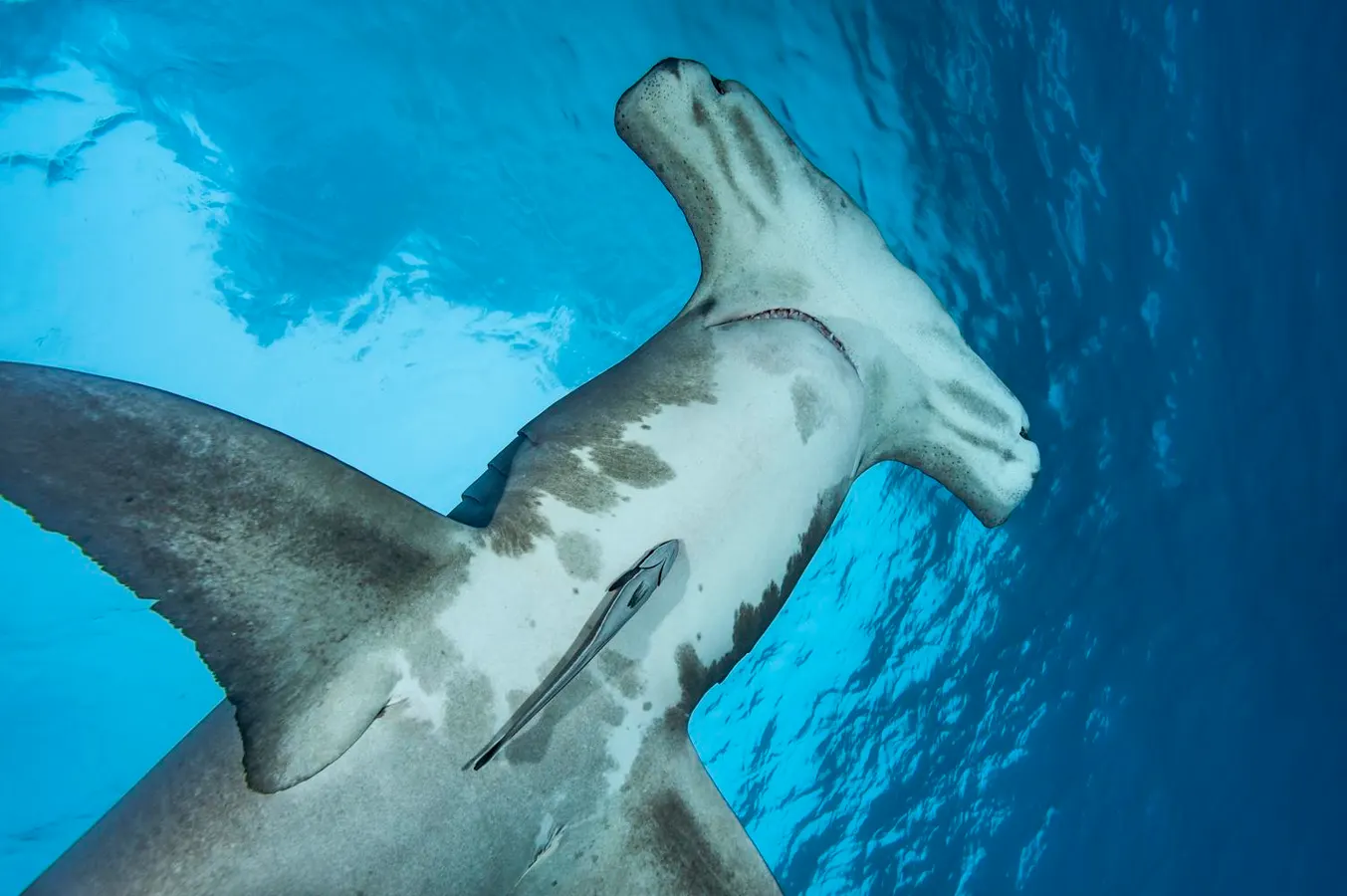Copyright forbes

The future of the great hammerhead depends on how we choose to coexist with the ocean that sustains us both. As we uncover more about its habits and habitats, we’re also confronted with uncomfortable questions about our relationship with the sea. (Photo by Alexis Rosenfeld/Getty Images) Getty Images The great hammerhead shark (Sphyrna mokarran) has long captured the imagination of divers and scientists alike. With its unmistakable T-shaped head and massive size, this species is both a marvel of evolution and a reminder of how little we still know about life beneath the waves. That’s because despite its fame, the great hammerhead remains shrouded in mystery. The largest of the hammerhead species, it is easily recognized by its broad, nearly straight dorsal fin. Found in warm tropical and subtropical waters around the world, this apex predator inhabits coastal areas, continental shelves, and coral reef systems. Growing up to 20 feet (six meters) in length, it uses its uniquely shaped head to improve maneuverability, enhance vision, and detect the faint electrical signals of prey like stingrays, smaller sharks, and cephalopods buried in the sand. Despite its impressive size and adaptability, great hammerhead populations are being threatened by overfishing, bycatch, and habitat loss. Its fins are highly prized in the shark fin trade, and even when caught accidentally, many do not survive release because of capture stress. The species also reproduces slowly, with females giving birth to live young after an 11-month gestation, producing small litters that make population recovery difficult. This is why they are listed as Critically Endangered by the International Union for Conservation of Nature, as their populations are declining worldwide. Yet basic questions about where they live, breed and feed are only now starting to be answered. For decades, scientists assumed that great hammerheads, like many large shark species, were long-distance travelers roaming vast stretches of ocean. That assumption shaped how conservation efforts were designed, often focusing on broad-scale protections rather than pinpointing local habitats. But recent research paints a different picture of a shark that stays closer to home than previously thought. Across regions from the northern Indian Ocean to the South Pacific, tracking studies and genetic analyses are revealing that great hammerheads may not migrate as extensively as once believed. Instead, they seem to favor smaller, defined coastal and island habitats, particularly during critical life stages. That finding changes everything. Limited movement means populations may be more isolated than scientists expected, with less genetic mixing between regions. This isolation can make them more vulnerable to local threats (like overfishing, habitat degradation, and warming waters that were mentioned above). It also means that protecting one area doesn’t necessarily safeguard the species elsewhere; each region might host its own distinct group of hammerheads with unique behaviors, diets and habitat preferences, requiring conservation plans tailored to those specific populations. For example, the hammerhead’s distinctive head (or cephalofoil) gives it excellent sensory capabilities, allowing it to detect prey buried beneath the sand. Studies have shown that adult great hammerheads primarily feed on stingrays, other sharks, and cephalopods. But younger individuals appear to have a more varied diet, feeding on smaller fish and crustaceans within shallow nurseries. That means these nursery areas are crucial to their development, as they provide young hammerheads with abundant food and protection from larger predators. Until recently, scientists didn’t know where many of these habitats were. Now, thanks to advances in tagging technology and local ecological studies, previously undocumented pupping and nursery grounds have been identified in places like French Polynesia, Australia, and the Maldives. One of the most intriguing findings comes from the South-Central Pacific, a region that this new research article shows may serve as a stronghold for the species. Here, researchers have observed consistent hammerhead sightings near islands and atolls, suggesting that these locations may possibly provide essential habitats for multiple life stages. Unlike more heavily industrialized areas, parts of the South Pacific still offer relatively pristine environments that could help populations recover if managed properly. But that window is closing quickly as coastal development, expanding fisheries and the intensifying effects of climate change threaten even the most remote ecosystems. If these habitats vanish, so too might the hammerheads that depend on them. This new discovery reframes how scientists understand and protect the species, highlighting that saving the great hammerhead isn’t just about preserving a single shark but maintaining the health and balance of entire marine ecosystems. MORE FOR YOU As top predators, great hammerheads play a vital role in maintaining balance within marine ecosystems. By preying on species such as stingrays, smaller sharks, and other mid-level predators, they help regulate population sizes and prevent any single group from dominating the food web. Without hammerheads, these prey species could increase unchecked, leading to an imbalance that can alter nutrient cycling, disrupt fish communities and weaken the resilience of coral reefs to other stressors like climate change and pollution. The loss of hammerheads, ultimately, signals a breakdown in the natural checks and balances that keep ocean ecosystems functioning. Protecting them thus supports the stability of entire food webs, helping to maintain the productivity and health of coastal and reef environments that countless marine species — and even human communities! — depend on. By combining local knowledge with modern research tools, scientists are beginning to map the full extent of these critical habitats and the complex lives that unfold within them. Still, challenges remain. Enforcement of fishing regulations is inconsistent across many parts of the world, and illegal finning continues to take a heavy toll. And even when hammerheads are released after capture, their stress levels often lead to post-release mortality. Add to that rising ocean temperatures and shifting prey distributions, and the species faces a precarious future… The publication highlights how global policies are essential, but they must be grounded in regional realities; what works in the Caribbean won’t necessarily apply in the South Pacific or the Indian Ocean. Protecting nursery and mating grounds must also clearly be a top priority, alongside efforts to curb overfishing and restore coastal habitats. And the more we learn about these sharks’ home ranges and behavior, the better we can design management plans that reflect their actual lives, not our assumptions. Their future will depend on how quickly we act — and how willing we are to rethink what conservation means in a changing ocean. Can we truly claim to understand the ocean if we allow its top predators to disappear from it? What does it say about us if a species that has thrived for millions of years vanishes on our watch? And how many other connections, still unseen, will unravel if the great hammerhead is lost? Perhaps the real question isn’t whether we can save the great hammerhead, but whether we’re willing to live in a world without it. Editorial StandardsReprints & Permissions



